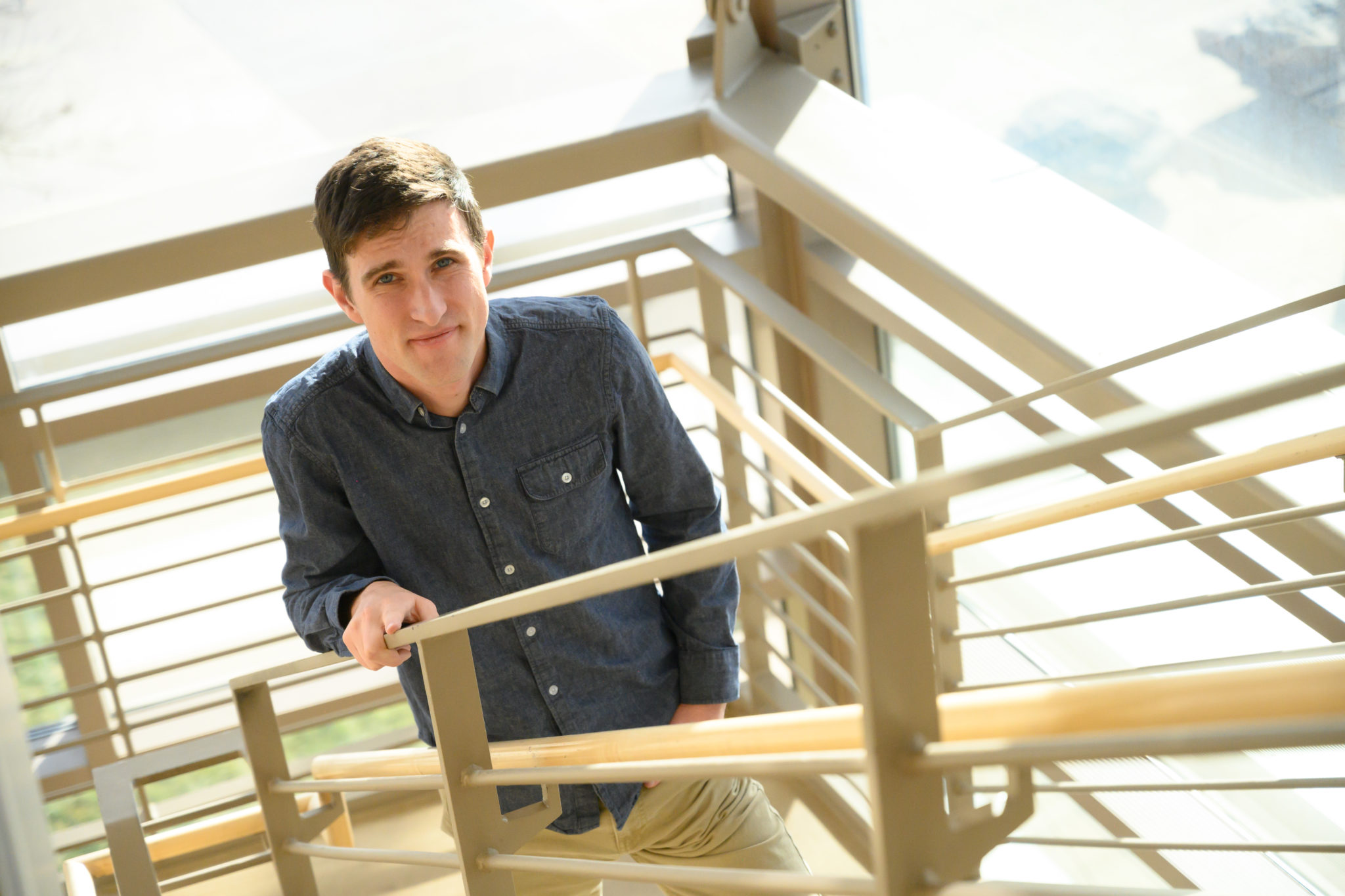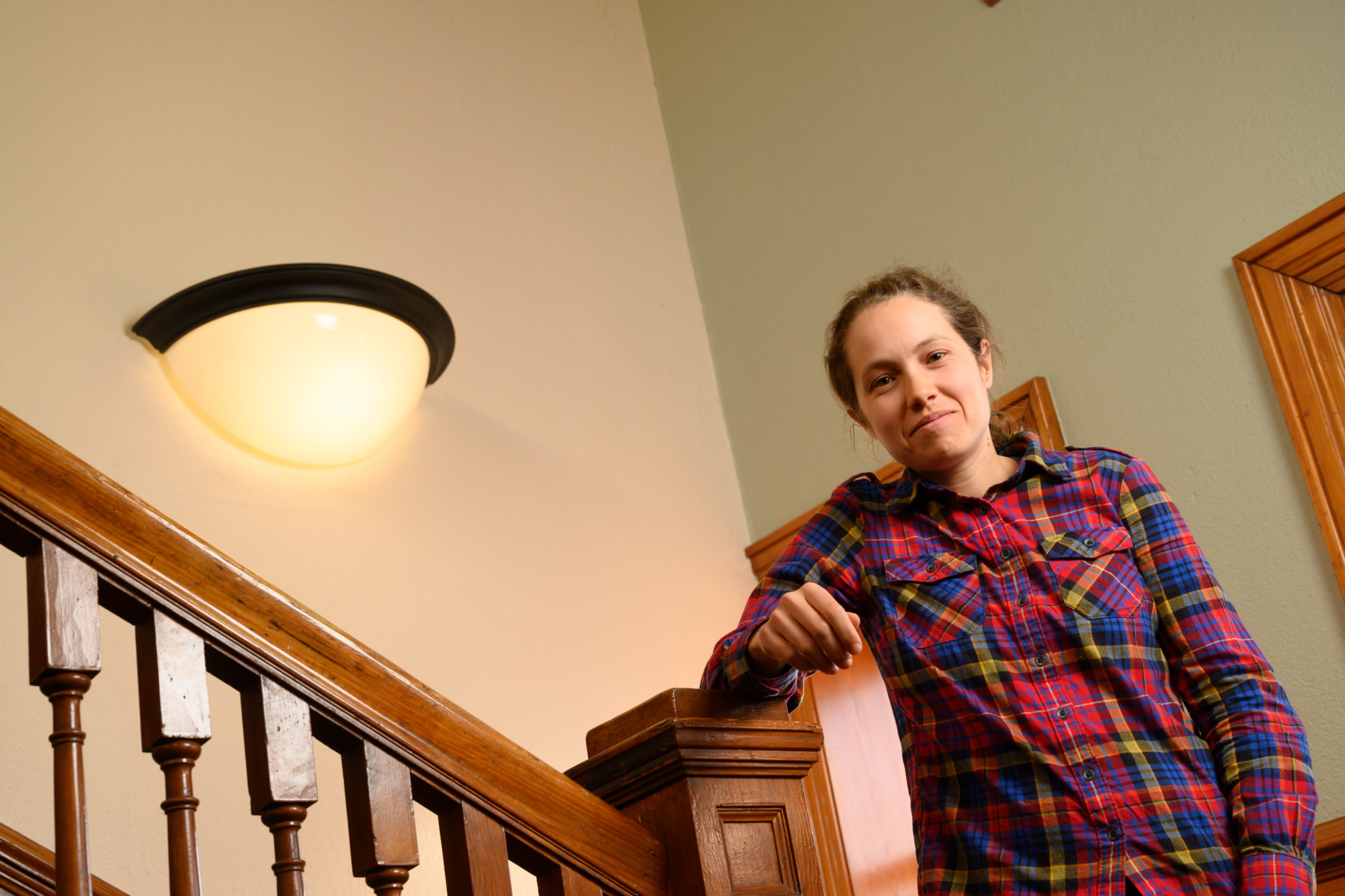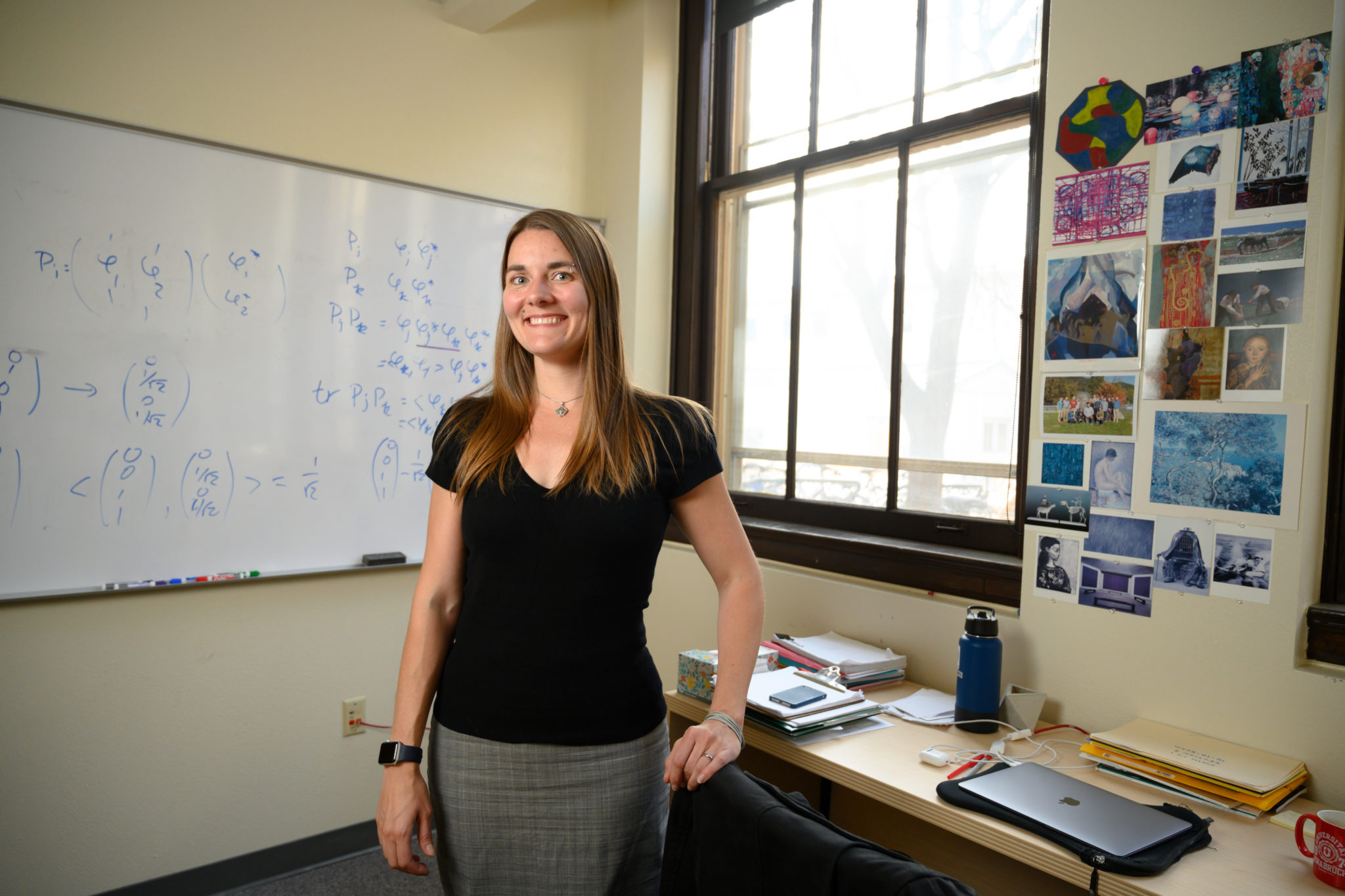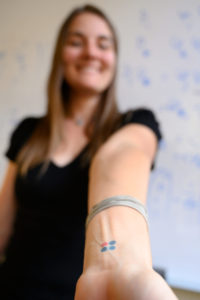Nate Blanchard, Andee Kaplan and Emily King share their expertise, interests and what they do for fun
We live in a world of Big Data, and demand is growing for professionals trained in the theory and practice of manipulating and analyzing large datasets. In response, Colorado State University launched an undergraduate major in data science in Fall 2018 – the first program of its kind in the Rocky Mountain region.
Since the major debuted, the program has attracted 30 students, with more in the pipeline. The major is housed in the College of Natural Sciences and spread across the departments of computer science, mathematics and statistics, with an existing partnership with the Department of Economics in the College of Liberal Arts, and others under development.
Last semester, the College of Natural Sciences welcomed three new faculty members from various disciplines to teach many of the new data science courses. They are helping lay a foundation for growth in the program as well as adding their areas of expertise to CSU’s diverse research portfolio.
Nate Blanchard, assistant professor, Department of Computer Science
Before CSU: Ph.D. in computer science and engineering from University of Notre Dame; B.A. in computer science from Hanover College
Originally from: Muncie, Indiana

What is your main area of research?
I’m interested in evaluating machine learning models for human-like behavior and trying to see how we can use those evaluations to build more human-like models in return.
What’s an example of a project you’re working on?
We have one project where we are trying to obtain state-of-the-art results by directly comparing the behavior of the brain to the behavior of neural networks, or deep learning. There are a lot of ways to define behavior, but what we’re doing is looking at how the visual system responds to, and is activated by, different stimuli in different ways. We can compare those responses across pairs of stimuli and define behavior as the similarities and differences in the visual system’s responses for that set of stimuli. We can do the same thing with neural networks – using the same set of stimuli and getting the network’s responses to the stimuli – and we can directly compare how the two disparate systems behave in accordance with that stimuli set. What we have found so far is that the neural networks with more human-like behavior end up having better performance on our more traditional tasks. Our project now is trying to use this information to build neural networks that are even more human-like.
What have you enjoyed most about being at CSU so far?
It seemed like a natural fit in so many ways. I think CSU has a very strong sense of community in the computer science department. I’ve been able to come in and after just a few months, I can go to anyone for advice and am starting collaborations in the department. I think that’s something unique and nice about CSU. The community is great, and the students are great.
What attracted you to the idea of helping launch the data science major?
It makes sense to me that there would be a program that’s a conglomeration of these different areas. As far as my research, I don’t really need to be an expert in, say, stats, when my training is in computer science. Instead, I want to be able to turn to others with more expertise than me, and say, “I’m doing this right, right? By the way, if this is interesting to you let’s collaborate on this.” It makes sense to collaborate with the other data science faculty, and it seems like there’s a lot of opportunity for that here.
What’s one thing about you that would surprise people?
I would say I’m a musical expeditionary – somebody who tries to find new things and avoids limiting themselves to any particular genre. A lot of different kinds of music bring different kinds of enjoyments.
What do you do for fun outside of work?
I really like hiking, and I play video games for fun. Is reading the news fun, or is it just an obligation? That, too. And I bike a lot.
Andee Kaplan, assistant professor, Department of Statistics
Before CSU: Postdoctoral associate in statistical science at Duke University; Ph.D. and M.S. in statistics from Iowa State University; M.A. and B.S. in mathematics from University of Texas at Austin
Originally from: Houston, Texas

What is your main area of research?
I have pretty broad interests, but my main topic these days is in record linkage. When you have multiple data sources and you want to join them together so you can perform some inferential task, that can be easy to do if you have unique, identifiable attributes in all your datasets, like Social Security numbers. But a lot of times you don’t have anything like that. Instead, you might have duplicates in the data, or noisy versions of the data. In those cases, I work in the realm of probabilistic record linkage, in a Bayesian framework, where we use ideas of probability and model structures to join or find duplicates in data.
What is an example of a project you’re working on?
I have a collaboration with a colleague at the University of Florida that involves this idea of linkages of multiple datasets. We are working on a streaming version where we can get new data in real time, and the linkage models get updated with the new data. Specifically, we are looking at a database called GDELT, which is a global database of political events from news stories. There is another team that is trying to see if they can predict failing states by pulling out data from news stories, like riots and other conflicts. We are helping them do that.
And, it’s not my main research topic, but I also do a lot of work in interactive statistical graphics. It’s kind of like a fun research hobby.
What have you enjoyed most about being at CSU so far?
CSU was a perfect fit for me. This is a nice-sized department where I can get to know the grad students and my colleagues, and I feel like CSU highly values collaborative and applied work while still being grounded in good practices and theory. This is an incredibly collegial department, and I feel very looked-after as a new faculty member. The other thing I really like about the department is that people seem to value work-life balance. It seems like people are always doing fun things on the weekend.
What attracted you to the idea of helping launch the data science major?
I think there are a lot of opportunities to bring people into the fold. “Data science” is kind of a hot topic, and maybe for students, it might be a little more exciting of an idea than statistics – even though I would disagree. But it’s really about spreading knowledge to our undergraduate population and bringing in students who are excited. I also think it’s important for us as statisticians to have a hand in shaping what data science is. I feel it is part of my responsibility to keep data science grounded in sound statistical principles.
What is one thing about you that would surprise people?
Well, maybe that I’ve been married for eight years, because I look kind of young. My wife, Carrie Chennault, is a postdoc working in urban ecology and sociology here at CSU.
What do you do for fun outside of work?
I climb a lot, both outdoors and indoors. I ride bikes. I used to race cyclocross, but I haven’t done that in a few years. I like to cook. And that’s pretty much all my free time.
Emily King, assistant professor, Department of Mathematics
Before CSU: Professor at University of Bremen in Germany; Humboldt Research Fellowship/postdoctoral research at three German universities: University of Osnabrück, University of Bonn, and Technical University of Berlin; postdoctoral fellowship at NIH; Ph.D. in math from University of Maryland; B.S. in applied math and M.S. in math from Texas A&M University
Originally from: Suburbs of Dallas, Texas

What is your main area of research?
What I do is try to find the best ways to decompose data – which could be anything, like images, or something more theoretical, like math structures. I try to figure out the best ways to represent things in fundamental building blocks, to better understand how to solve problems. The go-to example is every time you take a picture with your phone. Your phone takes 10 to 20 million measurements each time, and you can think of each of those measurements as numbers on a grid. Unless you change the settings on your phone, you’re immediately throwing away 80% of that information that was just recorded, in order to use fewer bits to save your image. If your phone were to throw out 80% of the pixel values, the resulting picture would be filled with black spots; instead, your phone represents the image with different building blocks and throws away information relative to those building blocks, tricking your brain. This is how JPEG compression works. I try to find the best building blocks to solve different problems.
What is an example of a project you are working on?
I have been working with collaborators on a new tool to analyze certain traits in layers of trained neural networks, to trace what happened as the networks were trained and whether the data were classified correctly. Neural networks are very much black-box processes, and the question becomes, why are they working? One thing that I think is neat about deep learning and neural networks is that now the mathematicians get to be the physicists, in the sense of getting to figure out how the world works.
What attracted you to the idea of helping launch the data science major?
One thing I really like about the way CSU is launching its data science program is that it’s not housed in one department and actively involves computer science, math and statistics. There are many different perspectives that are needed in order to do data science well.

What is one thing about you that would surprise people?
I have a tattoo on my wrist that symbolizes a bunch of my favorite classes of mathematical objects. It works in three orientations, and it touches on different directions in my research.
What do you do for fun outside of work?
I am addicted to travel – I have both Wanderlust and Fernweh. I enjoy distance running and weightlifting. I’m also a bit of a foodie and love cooking, baking and fermenting.